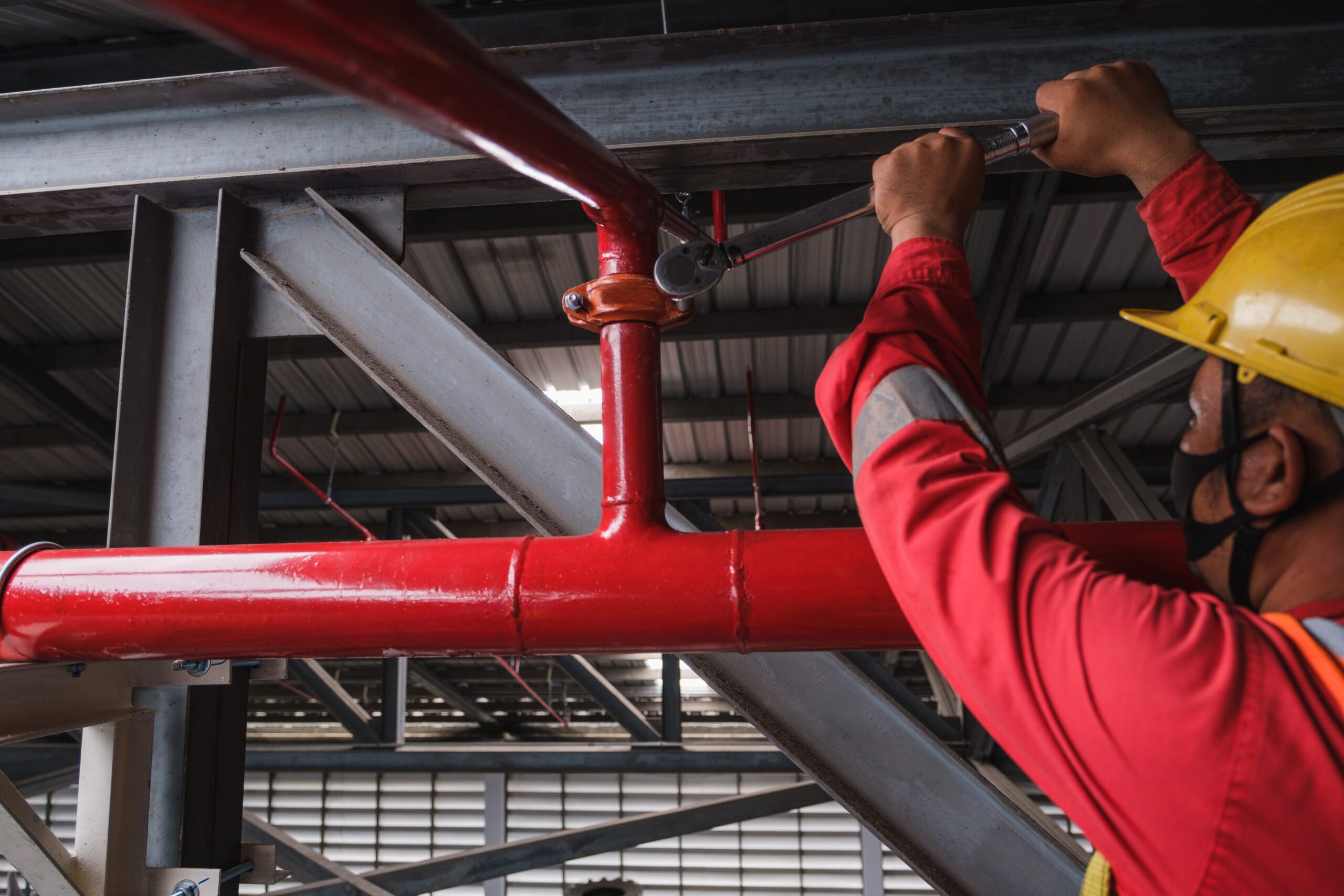What is the process?
Fire protection systems, such as sprinklers, play a significant role in ensuring safety in buildings. Properly designing and installing these systems is a process that requires detailed knowledge and experience. A sprinkler system project begins with a thorough analysis of the needs of the facility and ends with testing and acceptance. In this article, we will take you through the process step by step so that you can better understand how important it is to have it professionally implemented.
Facility needs analysis – the first step in designing the installation
Every sprinkler system project begins with a detailed analysis of the needs of a specific building. Engineers must assess the purpose of the facility, area, height and potential fire hazards. This process also includes consultations with the investor and verification of technical documentation. An important aspect is the identification of risk zones and their appropriate protection.
In the context of a production hall, it is important to adapt fire sprinklers to the production hall – such systems must take into account specific threats resulting from the presence of flammable materials or technologies used. The choice of sprinkler type depends on the nature of the threats, which is why designers carefully select solutions.
An integral part of this stage is also understanding the legal requirements and building standards. Applicable standards, such as PN-EN 12845, clearly define the principles of sprinkler system design, including the layout of sprinkler heads and adapting the installation to the type of protected space.

The most important elements of a sprinkler system – what to consider?
Once the analysis is complete, it is time for detailed design of sprinkler systems. Important elements that must be considered include the piping system, the type of sprinklers and the principles of their arrangement. The selection of sprinkler heads depends on the specific hazards. For example, in high-bay warehouses, ESFR sprinklers are used, designed for intensive extinguishing of fires in high rooms.
Designers must also consider requirements related to water pressure and the availability of hydrants. In the case of facilities where water is difficult to access, retention tanks and fire pumps are used to ensure an adequate flow of water.
Modernization of existing systems – is it worth it?
Sometimes it is necessary to modernize older installations to adapt them to new legal or technological requirements. This process may include replacing sprinkler heads, updating the control system or expanding with additional protection zones. Modernization is particularly cost-effective in the case of industrial facilities, where the risk of fire is high and the costs of potential losses are huge.
During a modernization, designers must reassess the needs of the facility and make hydraulic calculations. Step-by-step fire protection systems require strict adherence to procedures to ensure effectiveness and compliance with applicable standards.
The sprinkler installation process is a complex, multi-step process that requires precise planning and execution. From analysis of the facility’s needs, through detailed design, to testing and acceptance, each step is essential to the effectiveness of the entire system. Professional installation of fire protection systems ensures the safety of people and property, minimizing the risk of serious losses. Understanding this process allows you to better appreciate the value of well-designed fire protection solutions.
